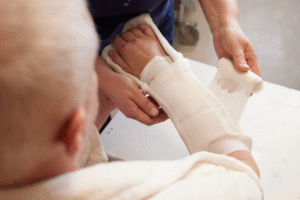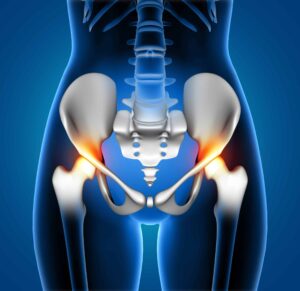Shoulder injuries are a frequent source of pain and limited movement that affect people of all ages and activity levels. Due to their wide range of motion, shoulders are inherently unstable, making them vulnerable to various injuries. Whether caused by repetitive strain, sports activities, or sudden trauma, understanding shoulder injuries treatment is crucial for a swift and full recovery.
Common Types of Shoulder Injuries
Several types of shoulder injuries can cause discomfort and impair function:
- Rotator Cuff Tears: Damage to the group of muscles and tendons stabilizing the shoulder joint. Tears can be partial or complete and often result from overuse or trauma.
- Shoulder Dislocation: Occurs when the upper arm bone pops out of the shoulder socket, often due to a fall or sudden impact.
- Tendonitis and Bursitis: Inflammation of the tendons or bursae (fluid-filled sacs) around the shoulder, commonly caused by repetitive overhead motions.
- Frozen Shoulder (Adhesive Capsulitis): A condition characterized by stiffness and pain, often developing gradually and restricting movement.
- Shoulder Impingement Syndrome: When shoulder tendons are compressed during arm movements, leading to pain and inflammation.
Causes and Risk Factors
Understanding what leads to shoulder injuries helps in both treatment and prevention:
- Repetitive Stress: Overuse from jobs or sports like swimming, tennis, or weightlifting can cause microtears and inflammation.
- Acute Trauma: Falls, collisions, or lifting heavy objects incorrectly may cause sudden injuries like dislocations or fractures.
- Poor Posture and Biomechanics: Slouching or improper movement patterns place extra strain on the shoulder joint.
- Age-Related Wear and Tear: Degeneration of tendons and cartilage over time increases injury risk, especially in people over 40.
- Lack of Warm-Up: Skipping warm-up exercises before physical activity can lead to muscle strain and injury.
Symptoms to Watch For
Recognizing symptoms early can lead to better outcomes:
- Persistent Shoulder Pain: A dull ache or sharp pain that worsens with movement or at night.
- Limited Range of Motion: Difficulty lifting the arm or reaching behind the back.
- Weakness: Feeling unable to lift or hold objects properly.
- Swelling and Tenderness: Around the shoulder joint.
- Clicking, Popping, or Grinding Sounds: During arm movement, which may indicate tendon or cartilage damage.
Diagnosis of Shoulder Injuries
Effective shoulder injuries treatment starts with an accurate diagnosis:
- Physical Examination: A healthcare professional will assess pain, swelling, and mobility while reviewing the patient’s activity history.
- Imaging Tests: X-rays help detect bone injuries or dislocations. MRI or ultrasound scans visualize soft tissues like tendons and muscles to identify tears or inflammation.
- Specialist Consultation: An orthopedic doctor may be necessary for complex or persistent injuries.
Treatment Options for Shoulder Injuries
Treatment varies based on injury severity and type, but many shoulder injuries improve with conservative care:
- Rest and RICE: Rest, ice, compression, and elevation help reduce pain and swelling in the initial phase.
- Physical Therapy: Tailored exercises strengthen shoulder muscles, improve flexibility, and restore function. Therapists may also use techniques like ultrasound or electrical stimulation to aid healing.
- Medications: Over-the-counter anti-inflammatory drugs (NSAIDs) can alleviate pain and reduce inflammation. In some cases, stronger prescription medications may be needed.
- Corticosteroid Injections: Administered to reduce severe inflammation when other treatments don’t provide relief.
- Surgery: Recommended if conservative methods fail or for severe injuries such as complete rotator cuff tears, recurrent dislocations, or fractures. Procedures include arthroscopy, tendon repair, or joint replacement.
Rehabilitation and Recovery Tips
Recovery requires commitment and patience:
- Follow Rehabilitation Plans: Adhering to prescribed physical therapy is vital for regaining strength and range of motion.
- Progress Gradually: Avoid rushing into heavy lifting or intense activities until cleared by your healthcare provider.
- Maintain Good Posture: Proper posture reduces undue stress on the shoulder joint during recovery.
- Ergonomic Adjustments: Modifying workstations and sleeping positions can aid healing and prevent further injury.
- Stay Consistent: Regular exercise and stretches, even after symptoms improve, help maintain shoulder health.
Preventing Shoulder Injuries
Taking preventive measures reduces the likelihood of injuries:
- Warm-Up and Stretch: Always prepare muscles before engaging in physical activity to increase blood flow and flexibility.
- Strengthen Shoulder Muscles: Focus on balanced exercises targeting rotator cuff muscles and surrounding stabilizers.
- Maintain Good Posture: Whether sitting at a desk or performing sports, proper alignment helps reduce strain.
- Use Correct Techniques: Proper form during sports, lifting, and repetitive tasks minimizes injury risk.
- Take Breaks: Avoid prolonged repetitive motions without rest periods.
When to Seek Medical Attention
Immediate consultation is necessary if you experience:
- Severe, sudden shoulder pain or deformity
- Inability to move or use the arm
- Signs of infection such as redness, warmth, fever, or swelling
- Symptoms that worsen or do not improve after home treatment
Takeaway
Effective shoulder injuries treatment hinges on early recognition, accurate diagnosis, and appropriate care tailored to the injury type and severity. Since the shoulder joint is one of the most flexible yet vulnerable in the body, protecting it through mindful activity, strengthening, and posture is essential. Whether dealing with minor strains or more serious tears, following professional guidance and committing to rehabilitation helps restore shoulder function and prevent future problems. Addressing shoulder pain promptly ensures a faster return to everyday activities and a better quality of life.











